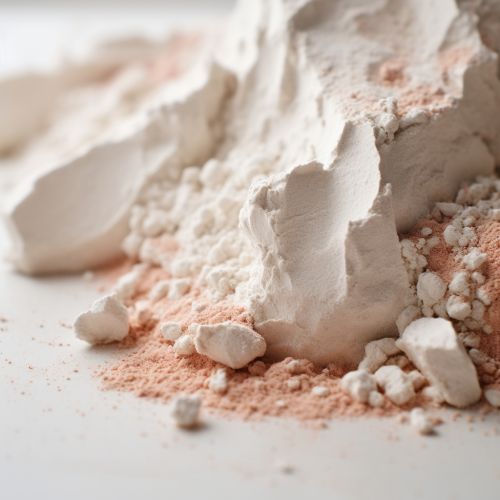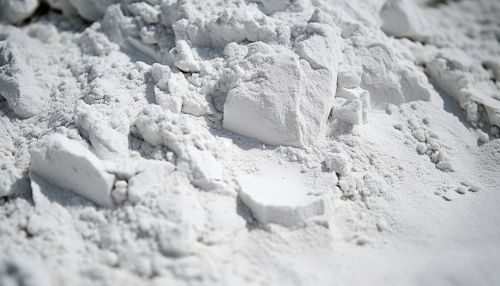Kaolin
Overview
Kaolin, also known as china clay, is a naturally occurring white, soft, plastic clay primarily composed of fine-grained plate-like particles. It is an essential ingredient in the manufacture of porcelain, ceramics, paper, rubber, paint, and many other products.


Origin and Formation
Kaolin is formed under acidic conditions through weathering or hydrothermal alteration of feldspar-rich rocks like granite, an igneous rock, and pegmatites. The process of formation involves the sequential layering of the mineral kaolinite, an aluminum silicate mineral, through the process of chemical weathering.
Classification
Kaolin is classified into two types based on appearance: white kaolin and red kaolin. White kaolin, which is more refined, is used in ceramics, paper, and pharmaceuticals. Red kaolin, which is more sandy and less refined, is used in the production of rubber and plastic goods.
Physical and Chemical Properties
Kaolin has a number of physical and chemical properties that make it useful in a wide variety of applications. It is chemically inert over a relatively wide pH range, has a low conductivity of heat and electricity, and is a good white pigment.
Uses and Applications
Kaolin is used in a wide variety of industrial applications. Its primary use is in the paper industry, where it is used as a filler and coating material. It is also used in the ceramics industry, where it is used in the manufacture of white ware and porcelain. Other uses include the manufacture of rubber and plastic goods, paints, pharmaceuticals, and more.
Extraction and Processing
Kaolin is extracted from the earth using open-pit mining. The kaolin is then processed through a series of steps including crushing, grinding, screening, and classification. The final product is a fine white powder.
Global Production and Distribution
The largest producers of kaolin are the United States, Brazil, United Kingdom, and France. The largest consumers are the paper industry and the ceramics industry.
Environmental and Health Impacts
While kaolin is a natural material, its extraction and use can have environmental and health impacts. These include land degradation from mining, air pollution from processing, and potential health risks from exposure to kaolin dust.
Future Prospects
With the increasing demand for kaolin in various industries, the future prospects for the kaolin industry look promising. However, the industry also faces challenges such as environmental regulations and competition from synthetic materials.
